The Invisible Workplace Crisis
There’s little doubt that COVID-19 has radically transformed the residential remodeling, housing and kitchen/bath landscape.
For one thing, remodeling demand is reportedly at record highs, with both short- and long-term forecasts overwhelmingly positive. At the same time, new lifestyles emerging as byproducts of the global pandemic are proving responsible for the current mindset driving home design, product preferences and consumer purchases. Homes have literally been transformed, doubling in many cases as offices, schools, playgrounds and multi-generational residences. Wellness, sanitization, biophilic design and an emphasis on outdoor living have become more pronounced than ever. Multi-functional kitchens and eco-inspired baths remain high on the list of remodeling projects favored by homeowners.
But there’s more to the impact of the coronavirus than simply that.
Businesses on every rung of the product-distribution chain have been forced in the past 18 months to essentially reinvent themselves, implementing virus-mitigation strategies ranging from masking and showroom protocols to an increased emphasis on remote employees and digital-connectivity tools. Product costs have risen sharply, while labor shortages have been exacerbated and supply chain disruptions continue to result in project delays. Home prices have also spiked amidst shrinking inventories and a pronounced flight from the cities.
And now there’s yet another COVID-related issue that’s increasingly impacting the residential construction trade: the profound impact that the public-health crisis is having on workplace mental health.
Indeed, throughout the months-long pandemic, employees and business owners alike have faced an unprecedented confluence of issues threatening their physical and mental wellbeing. Routines have been disrupted, relationships strained, fears heightened over personal health and the health of loved ones. Feelings of isolation have led, in many cases, to a pervasive sense of loneliness and vulnerability. Anxiety, uncertainty, depression and stress have similarly taken a toll. While many remote employees are handling the disruptions well, others miss the sense of connectedness they had once in offices, factories and showrooms.
The subject of workplace mental health has been thrust into the public spotlight in recent months, particularly now that the nation is experiencing a resurgence of the coronavirus amidst contentious differences regarding issues like masking and vaccinations. And now, with no end to the pandemic seemingly in sight, many people are experiencing a sense of “horizonlessness,” the lack of a firm reference point regarding the future, as well as a sense of déjà vu regarding potential job losses and business closures.
All of this has had a cumulative effect. Indeed, workplace mental health is being described by experts as an “invisible crisis” that has yielded a palpable rise in chronic pain, fatigue, substance abuse, loss of productivity and suicide.
It has also yielded, thankfully, some decisive action.
The National Association of Home Builders, for example, is actively attempting to change the culture regarding mental health awareness by providing resources tailored to employees and business owners in the residential construction trade. As evidence, the NAHB recently launched a multi-faceted initiative focused on helping business owners support healthy work environments and turn mental health awareness into action. As part of that effort, the NAHB partnered with other trade groups and mental-health experts to develop specific tools for business owners to learn more about employee wellbeing, help eradicate the stigma associated with mental illness, and encourage employees to utilize the resources available to help navigate this complex, sensitive issue.
This effort is more than simply commendable. Indeed, it should serve as a model for others.
Business leaders and industry trade associations have an important role to play when it comes to balancing worker health with the ROI that can be realized by focusing on wellness through the lens of lower healthcare costs, reduced absenteeism and increased productivity.
Corporate management should fully understand why mental health is essential to the success of their companies. They should also understand how they can be proactive in incorporating mental health into a company culture that prioritizes the wellness of employees as much as it does revenue and profits. 
The post The Invisible Workplace Crisis appeared first on Kitchen & Bath Design News.
Did you miss our previous article…
https://www.texaspiekitchen.org/?p=307
My Phone is Ringing, and This is Why
I am frequently contacted by business owners who are dissatisfied with their digital marketing efforts. The number one reason I hear time and time again is “My phone isn’t ringing.” The owners want more customers, and their marketing efforts are not achieving that goal.
I have pinpointed three categorical reasons this disconnect occurs. If you are spending money on digital marketing and your phone isn’t ringing, read on for a guide to garner more customers. As an advocate for businesses, my hope is to empower owners with educational insight from independent sources so they can make informed decisions with confidence.
Reason #1: Agencies Selling the Work Wanted
To understand the business/agency disconnect, we must explore the typical marketing agency business model. Most are structured around a staff that includes website builders, social media marketers, graphic designers and copywriters who often work on search engine optimization as well. The website builders are project oriented and need an ongoing supply of work to justify their pay. Conversely, the social media work is typically ongoing.
The most common occurrence I see is building an entirely new website for a client when a less expensive update would suffice. If a website builder is needing new work, unscrupulous agencies will begin pitching websites to all their prospects, and statistically they will get work. I personally discovered one agency that designed a website template programmed to increase additional billings and work. They created internal coding on the website that overrides automatic search engine optimization (SEO) from working so they could bill for SEO work separately after the website build. I had the uncomfortable task of informing the client of my discovery and the cost of re-coding the website.
Green Light: An agency that produces documented reporting that shows your website needs SEO work and provides a market share report that demonstrates a deficiency in your website visitors compared to your competitors visitors is an indicator they have the expertise and have done research to support the suggestion. Reporting that clearly shows the deficiencies that need correction is a good sign.
Red Light: When the agency relies only on the visual appearance of the website, or wants to produce a website that is photography based with no supporting analysis of your site. Websites that serve as a photo album with little or no written content will not increase new visitors from Google searches.
Hint: You can check your website’s SEO score for free on many websites. This one scores on a scale of 100: https://www.seobility.net/en/seocheck/. This is the perfect tool to utilize to double check agency website work for integrity. This tool (or a similar third party) should also serve as a deliverable to achieve prior to final payment for website work.
Hint: If you are rebuilding your website, insist on an Americans with Disabilities Act (ADA) compliant website. This ensures disabled visitors can access all the information. Websites are legally required to be ADA compliant; additionally, ADA-compliant websites are more SEO friendly, as the requirements of ADA and SEO overlap. Following is a link to a free ADA website checker: https://wave.webaim.org/
Reason #2: Owners Believe Digital Marketing is a Finite Process
Digital marketing is an ongoing process of pivoting with the additions of experiences on social media. Instagram Live video feeds and Facebook Business Suite are a few of the latest 2021 additions. Additionally, building traffic to a website is an ongoing process of deliberate growth dictated by Google, Bing and others. All of these show your content based on algorithmic updates that change how they choose, and who to show, your content. To add to the complexity, your competitors are actively adding content to drive visitors in tandem.
I demonstrate this to clients by showing them their market share of the products they offer, as it is an effective benchmark. For example, the search terms “cabinet hardware” and “kitchen cabinet hardware” total 124,000 per month. If your website generates 4,000 monthly visitors, you have 3% of the total market. By showing this data in numerical form, it speaks a language most owners can understand and they can then develop a budget. After a website is built, there is work to be done on the SEO side, digital advertising, or both, to drive people to it.
Red Light: Business owners who think a website just needs to exist to increase visitors, or they sporadically post on social media with no brand campaign.
Green Light: Professionals who have market share reports to determine the growth potential and the credentials to grow, and will supply references for website SEO initiatives. Social media posting plans that encapsulate more than one post type, ie: Stories, videos AND Feed posts.
Hint: Consistent Blog Posting is the perfect vehicle to connect with your customers and provide new content that search engines want.
Reason #3: The Marketing is Lacking
Targeting the correct audience is easier than ever with the amount of demographic and geographic data that every digital platform collects. When advertising on Google, Bing or social media, the success is in the details. If you are spending on digital advertising, you need to be guided by the reporting that shows the success rate by your audience demographics and geographical location. If your phone is not ringing, dig deeper into who exactly is being targeted to view the ads and adjust it accordingly.
Hint: Request reporting that shows the detail of the audience, the platforms the ads were shown on and the geographic locations.
A consistent brand identity provides consumers with the confidence of knowing the caliber of your products and the service associated with it. Does your social media brand mirror your website and printed collaterals? Does the customer experience stand up to the message? Are your employees educated on your brand identity? Having a solid, well-defined brand identity that clearly demonstrates your unique value is crucial. It ensures the customers are receiving the brand experience they expect.
Hint: Train your employees to ask customers qualifying questions. How did you find us? How was your first experience with us? How can we improve?
Savvy business owners view marketing as an extension of their business, and managing it with loyal partners and a staff that is accountable is a pathway to success. Trust your gut if there is any hesitation on your part and educate yourself with the help of third-party consulting when needed. Digital marketing is complex and is a powerful tool to grow your business, and make your phone ring. 
Denise Grothouse has an extensive background in international business, branding and marketing. She specializes in digital and social platforms and integrating them with traditional marketing and branding strategies. No stranger to the kitchen and bath industry, she is best known for her work as chief brand officer of Grothouse, Inc., and is the current president of the marketing firm Perfect Six.
The post My Phone is Ringing, and This is Why appeared first on Kitchen & Bath Design News.
Did you miss our previous article…
https://www.texaspiekitchen.org/?p=304
Ferguson Donation Aimed at Children’s Mental Health
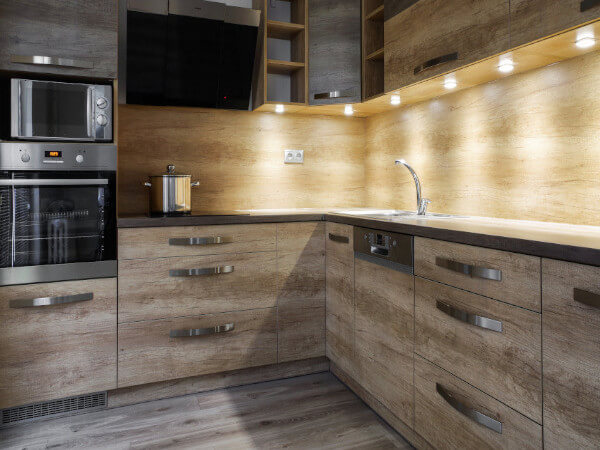
NEWPORT NEWS, VA — Ferguson LLC, the Newport News, VA-based distributor of plumbing and related building products, has donated $2.5 million to a local pediatric hospital whose efforts will be aimed largely at children’s mental health, the company announced.
Ferguson’s donation, proffered to the Children’s Hospital of The King’s Daughters’ Lighting the Way campaign, will assist in the construction of a 14-story, $224 million mental-health hospital and outpatient center for children. The facility is scheduled to open in 2022, with 60 private patient rooms and space for programs that address gaps in mental health care in the region, Ferguson officials said.
“One in five children in the U.S. has a diagnosable, treatable mental-health condition, and yet the majority go without either diagnosis or treatment,” said Kevin Murphy, Ferguson CEO. “The need is only trending up, as we are just starting to see the impacts of the pandemic on the social and emotional health of children.
“The children’s mental health crisis has deep and lasting impacts in every facet of our community,” Murphy said. “Ferguson is extremely proud to be part of this endeavor.”
The post Ferguson Donation Aimed at Children’s Mental Health appeared first on Kitchen & Bath Design News.
Did you miss our previous article…
https://www.texaspiekitchen.org/?p=301
Nicholas Vanderhovel

An innovator not only because of his designs but in what it means to be a professional designer and how that translates into a design experience for clients, Nicholas Vanderhovel is one of the youngest designers in the country to have achieved his Certified Master Kitchen and Bath Designer from the NKBA. Vanderhovel, CMKBD, CAPS, CLIPP, the owner and designer of Kitchen NV, in Pinckney, MI, achieved the certification at age 32 and is said to be one of only a handful of people in Michigan with the title.
The designer is a purist when it comes to function and aesthetics and curating a space. He has worked on every side of design – from installation to drawing to material selection – in order to anticipate client needs and educate them.
Vanderhovel believes that luxury doesn’t have to be unobtainable. Rather, luxury has to do with how a person is treated and whether that person’s needs are met. He always wants a client to leave with that feeling, and that is what has led him on his quest for knowledge, reaching out to other leaders in the industry to learn more, and working with manufacturers to improve processes and products. He is dedicated to mentoring others, as well.
The post Nicholas Vanderhovel appeared first on Kitchen & Bath Design News.
Did you miss our previous article…
https://www.texaspiekitchen.org/?p=298
Angela Poirrier
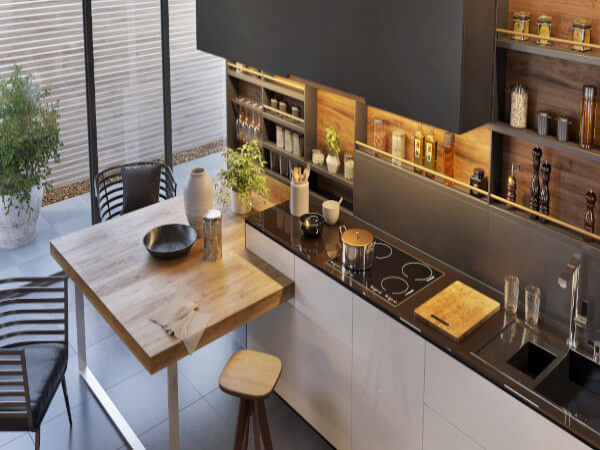
Angela Poirrier, CAPS, isn’t just a designer. According to her peers, Poirrier – owner and designer, Acadian House Design + Renovation, in Baton Rouge, LA – is a leader in an industry that is constantly evolving. She loves learning as well as passing along her expertise to others. From attending KBIS to more local NKBA and HBA meetings, she uses her insights to drive the industry forward. Among her initiatives are maintaining a regularly updated blog and hosting over 100 seminars to keep both peers and clients abreast of the latest trends and developments.
Within her own business, she has developed a system and process for every step along the project timeline. She then monitors and analyzes these processes to ensure they remain both effective and profitable for her team. Meanwhile, her marketing plan has allowed her to know the return on investment of every dollar spent and to forecast well into the future.
Although it may not come with a title, being recognized as a leader among her colleagues is among Poirrier’s proudest accomplishments. Through her own drive to learn and grow within the kitchen and bath industry, she has become a go-to for others seeking to understand everything from successful marketing and client relations to hiring employees and subcontractors.
The post Angela Poirrier appeared first on Kitchen & Bath Design News.
Did you miss our previous article…
https://www.texaspiekitchen.org/?p=295
Earning Trust in a Skeptical World
The figures are shocking. Less than 25% of Americans trust the federal government to do the right thing, according to a recent Pew survey. And it’s not just Uncle Sam. Approximately a quarter of the U.S. population does not have a religious affiliation. One-third of Americans don’t trust the media to tell the truth, reaching a historic high, according to Gallup.
Can you blame people for being skeptical, weary and trust adverse? There have been monumental failures of leadership, deceptive practices, the use of “alternative facts” and outright deceit from brands, the government, public figures and media outlets that at one time offered a definitive perspective on the day’s news. Unfortunately, Walter Cronkite is not around any longer.
Becoming a Trusted Resource
How does a kitchen and bath showroom, in the midst of ongoing pandemic concerns, booming business volume and never-before-seen supply chain challenges, earn and maintain the trust of a skeptical customer base and market?
In her new book Trustworthy: How the Smartest Brands Beat Cynicism and Bridge the Trust Gap, Margot Bloomstein provides a process for becoming a trusted resource for a showroom’s client base. That road map has three parts: voice, volume and vulnerability.
Voice refers to the consistent and familiar way in which a brand engages with its market both verbally and visually. A brand’s voice elevates a showroom or design-build organization’s most important qualities and characteristics.
Volume refers to the amount of information that a brand produces and determining how much content is enough. If you review kitchen and bath showroom websites, most will feature a portrait or project gallery with lots of kitchen images. Where this use of imagery falls short is that there typically are only images without explanation of anything. It’s volume for volume’s sake, and too often it’s mind-numbing. Do you really believe that posting pictures of 50 different kitchens shouts to your customer base, “trust us”?
Showroom customers want and need affirmation. They want to feel confident in their knowledge and ability to make the right decisions for their project. They need for showrooms to make them smarter. Showrooms can earn trust by teaching their customers to trust themselves by providing information and resources that make decision making and working with a showroom easier.
At TraVek (Scottsdale, AZ), teaching customers to trust themselves begins and ends with strong communication and education. The showroom establishes trust with its market by offering monthly remodeling seminars in the showroom, sharing dinner with a crowd on average of 20 to 25 homeowners and explaining what’s involved in the renovation process, information that they need to know, expectations, timelines, how to interview and evaluate contractors and price points to consider.
TraVek’s Susan Raisanen explains that trust building begins with an initial meeting with a client at their home with all decision makers required to attend. Timelines are explained and agreed to, which is especially important in today’s environment when many showrooms may not be able to supply product or start projects for four to six months from the time a contract is signed. TraVek continues to communicate with every client that is waiting weekly with a phone call, email or text depending on how the customer prefers to receive messages. “Even if the message is nothing has changed, reaching out and having a weekly touch point says to the customer ‘you have not been forgotten, we still care about you,’ and that helps to reinforce the trust factor with our showroom,” Raisanen said.
At Murphy Bros. Design, Build, Remodel (Blaine, MN), the new supply chain paradigm has changed the sales approach. John Murphy explains, “We are completely transparent with customers, especially at initial meetings. Realistic timelines are presented, goals are established and market conditions are shared. We’ve even modified our proposals to highlight in the project scope the potential for delays at the start, in the middle and even before a project can be completed. We found that if we set expectations at the front end of projects, clients understand and they realize that other industries are experiencing similar challenges.”
Murphy Bros. also encourages its clients to select a plan B for each product type in case there are unexpected production delays and steers clients away from products that it knows can’t meet deadlines. The company also created a small woodshop in the back of its facility and retained a full-time woodworker to build custom cabinets if product is needed immediately that cannot be obtained through traditional channels.
Vulnerability refers to the uncertainty that comes from exposing your business to risk and criticism in the hope of improving, finding support or connecting with those who share similar values. Bloomstein claims that vulnerability is a corporate strength. It trades the safety of sure bets and certainty, such as three-week lead times, for choices that open the organization to risk, such as we can’t tell you definitively when your cabinets will arrive, that results in potentially greater rewards because you are being honest and setting realistic expectations.
Vulnerability is how a business makes its values visible, how it owns mistakes, how it deals with the unexpected and how values are expressed and why.
Richard Campbell (Bath, Kitchen & Tile Center with three showrooms in Delaware and one in Maryland) did not receive a positive reception from his builder clientele when he informed them of product delays and unidentifiable delivery dates. “Almost all of our major builder clients told us they were walking away, only to find that other destinations had the same problems that we were experiencing. We understand what our builders’ priorities are and started crafting solutions to meet them, such as ordering cabinets before a house is framed and working with the builder to adjust the framing to accommodate cabinet dimensions.”
Bath, Kitchen and Tile has crafted stronger partnerships with its builder clientele by working together to develop supply chain solutions. “You build trust by recognizing and explaining to clients that we are in this together. Let’s develop solutions and provide options that work, when others in the industry are resigning themselves to the belief that there is nothing they can do,” Campbell stated.
Tom Caruso (Caruso Cabinets, Avon, OH) shifted his business model to take advantage of the surge in new home construction. He, too, is ordering cabinets before a home is framed and ordering truckloads of product weekly. This has provided Caruso the flexibility to pivot when necessary and supply product based on the progress of a project, client needs and highest priorities.
Bellmont Hardware showrooms in the San Francisco Bay area have personalized communication with customers by moving to appointment only. “This enables our sales team to provide undivided attention that results in more credibility and trust with customers,” related company general manager who also happens to be named Rich Campbell.
Bath Kitchen & Tile, TraVek, Caruso Cabinets, Murphy Bros., Bellmont and others all are advising their customers not to start demolition until all product has been delivered. Most customers have resigned themselves to the longer timelines and to be patient. Bath Kitchen & Tile has been promoting a financing option to its clients that has been well received because payment does not begin until products are delivered. The company also is developing an automated communication system that updates clients on the status of their project every two to three weeks with varying messages that keep enthusiasm high, telling customers how important they are and encouraging outreach to the showroom if there are questions. The message is that Bath Kitchen & Tile wants to hear from its clients and talk to them during the wait period.
You can’t have too many touchpoints in this environment, claims Brendon Murphy (Charleston Cabinetry & Countertops, LLC). At initial client meetings, he explains the 10 stages of a project from the initial design consultation to customer sign off at the end. “Reviewing each stage of the product sends the message that we want our customers to understand what is involved and demonstrates that our approach is well organized and thoughtful, which helps to build trust,” Murphy said.
Many showrooms have found that there is a silver lining to the supply chain’s dark cloud. Tom Caruso explained, “Because of lead times, our attention to detail has never been stronger. We check and double check every order to eliminate mistakes because if there is a problem, it may take four months or longer to resolve.”
Brendon Murphy sends the message to his clients that he needs their help to get them what they want. At initial meetings, he asks clients how much they want to invest in their property and explains that, at the end of the day, his goal is to add more value to their home than the amount of their investment.
Kitchen and bath showrooms can build trust with consumers by effectively managing customer expectations, by using their voice in the right volume, making it easy to do business with them at every stage in the customer journey and to allow themselves to be vulnerable by explaining how they are addressing challenges and responding to problems with transparency and honesty. And the entire industry can benefit from the sage advice of Mark Twain, who said, “If you tell the truth, you don’t have to remember anything.” 
Tom Cohn serves as the exec. v.p. of the Bath & Kitchen Business Group and president of Cohn Communications, Inc., a full-service strategic marketing and public relations agency headquartered in Bethesda, MD.
The post Earning Trust in a Skeptical World appeared first on Kitchen & Bath Design News.
Did you miss our previous article…
https://www.texaspiekitchen.org/?p=292
Ginger Rabe
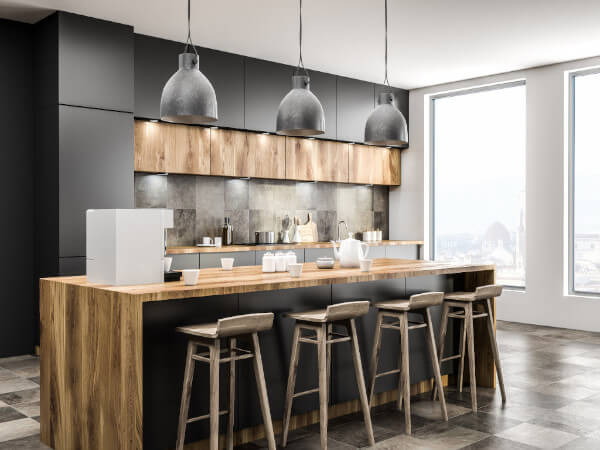
Taking pride in custom designing each kitchen so that each has its own identity, Ginger Rabe, founder of Ginger Rabe Designs, LLC, in Carlsbad, CA, focuses on current trends as well as what is timeless.
With a Master’s Degree in architectural building within sustainable design from Jefferson University in Philadelphia, Rabe is now a professor of the Master’s program at the Design Institute of San Diego. This position allows her to share her knowledge of the kitchen and bath industry and sustainable design.
Rabe is on the board of the NKBA of Southern California chapter, and is also on the speakers bureau for the San Diego Green Building Council and the advisory council for Palomar College Interior Design Department. In addition, she gives master classes on kitchen design, and is a TedX speaker on healthy spaces.
In 2020, she received the Power Business Woman Award, and in 2021 received an award for the San Diego Favorite in Kitchen Design and Construction.
Proficient in design-build, Rabe reports that she will be getting her general contractor’s license this year, as her firm also builds custom homes. Her furniture line includes five unique pieces – each named after someone in her family – that pair perfectly with her cabinet designs.
The post Ginger Rabe appeared first on Kitchen & Bath Design News.
Accessorizing the Kitchen
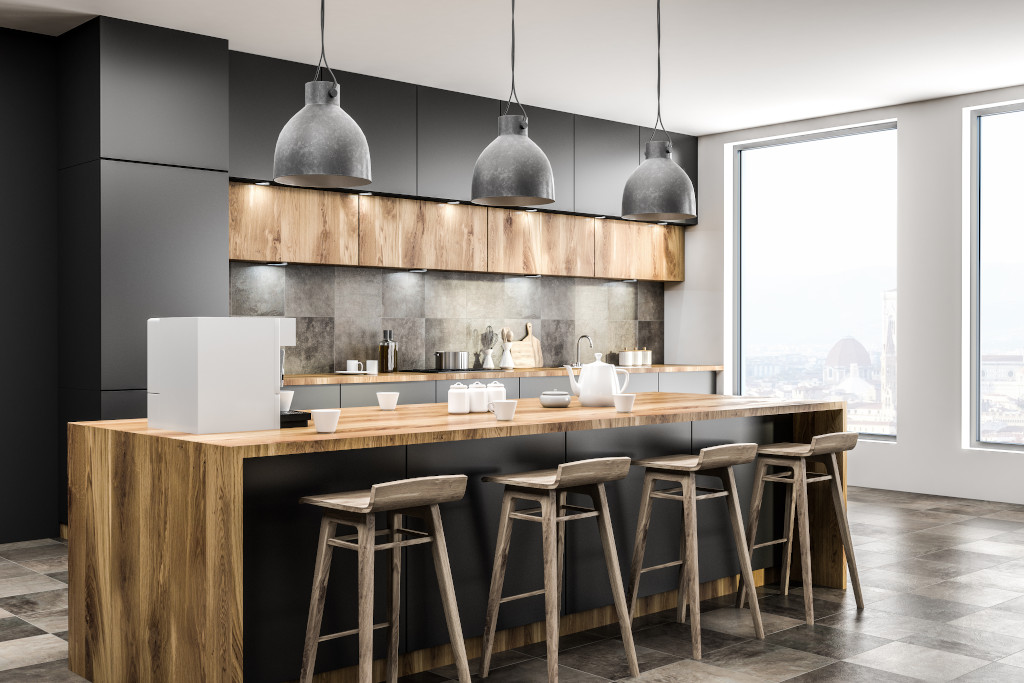
As homeowners spend more time at home, working and living in their kitchens with their families, the desire for streamlined functionality and a cleaner appearance has only continued to grow. Sought-after details for organizing pantry items, charging electronics and putting everything in its place are just some of the requested details for kitchen accessories and cabinet interiors.
Ease of use is a must for these elements, but aesthetics and beautiful finishes are also part of the mix. Manufacturers have proven to be up to the task, however, as cabinet pullouts don’t just offer function, but do it in style; and accessories deliver the best in function while blending in and even enhancing their surroundings.
Following are some of the hottest trends in interior fittings and kitchen accessories right now.
–Storage accessories are increasingly becoming customized for how homeowners use their space, with removable caddies, utensil storage, adjustable drawer inserts and movable pegs being used.
— Power sources for charging electronics are being hidden away, with customized spaces being created in drawers and nooks for convenient powering up.
–Pullouts now include very specific functional accessories, such as knife blocks and bins that keep items close at hand.
–Reaching into dark cabinets, corner spaces and high storage is becoming a thing of the past, as interior storage units now easily bring the items to the user.
–Using every inch of space is a must in today’s organized kitchens, and spices, sheet pans and cooking utensils find their own spaces in carved-out storage.
–Shelving continues to grow and evolved in the kitchen, with styles ranging from live edge wood to industrial metal.
The post Accessorizing the Kitchen appeared first on Kitchen & Bath Design News.
A General Timeline for Your Kitchen Remodeling Project
If you’ve been hesitant to begin your kitchen remodeling project, you’re going to want to read this article. Yes, it’s no secret that a remodeling project is not merely a simple task. A kitchen remodel can be an intricate project which requires careful details and planning. This fact alone can lead homeowners to push off their much-needed house projects. However, don’t let this deter you from creating the kitchen of your dreams. With the right consultation and team, your kitchen project will be planned out and ready to begin in no time.
Consultation
The first step in your remodeling journey is consulting with your renovating professionals. The consultation lays out the groundwork and introduces you to the wide variety of kitchen possibilities offered for you. After you schedule your consultation, you can even spend some time perusing the internet for some kitchen images you like. This will give your designer an idea of your style. Call your nearest Kitchen Solvers today for your kitchen consultation!
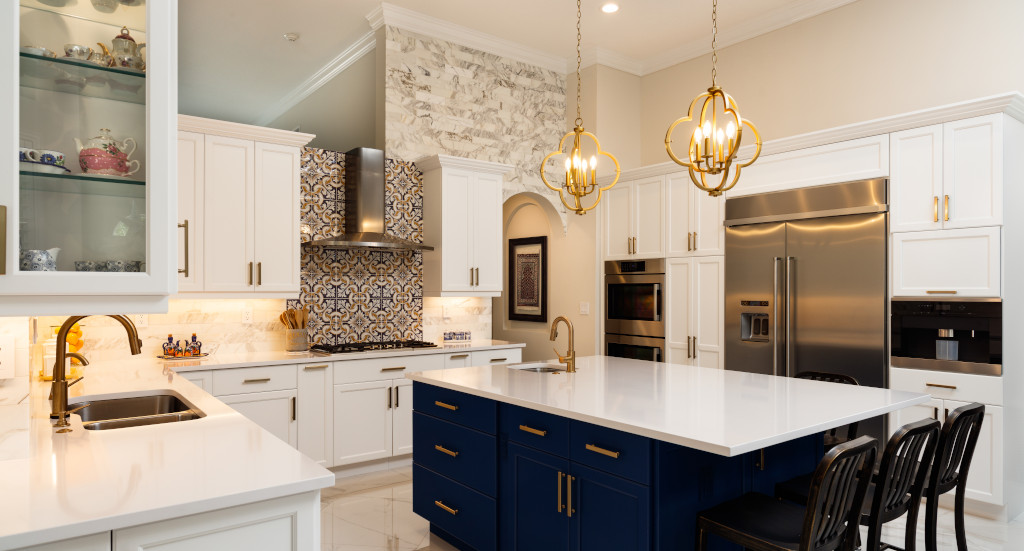
Design and Selection
On your next consultation, you will choose your kitchen design and layout. There are many to choose from and based on your wants, needs, and functionality we will help you to narrow down those decisions to find the perfect fit for your home. This process normally takes 2-8 weeks depending on availability and scheduling. It’s an important choice and we want to ensure you are not rushed through your decision-making process.
Project Planning
After you choose which designs to be implemented into your home, we can fully get the ball rolling on beginning the project planning. This step is where we fully introduce you to your project manager. Your project manager will facilitate and organize all the steps which need to be taken to complete you newly remodeled home. They’ll keep you updated on each step as the process begins to take way. When the project planning is complete, you’ll have a good idea of when to expect the installation crew to come.

New Kitchen Installation
New kitchen installation takes around 2 to 3 weeks. This final step involves the demolition of your kitchen by tearing out all the existing cabinetries. Then implementing your electrical and plumbing wires and pipes to work with your new appliances and light fixtures. Once the plumbing and electricity is configured, flooring and cabinet installation can begin. Typically, these installations each take around 3 days to complete.
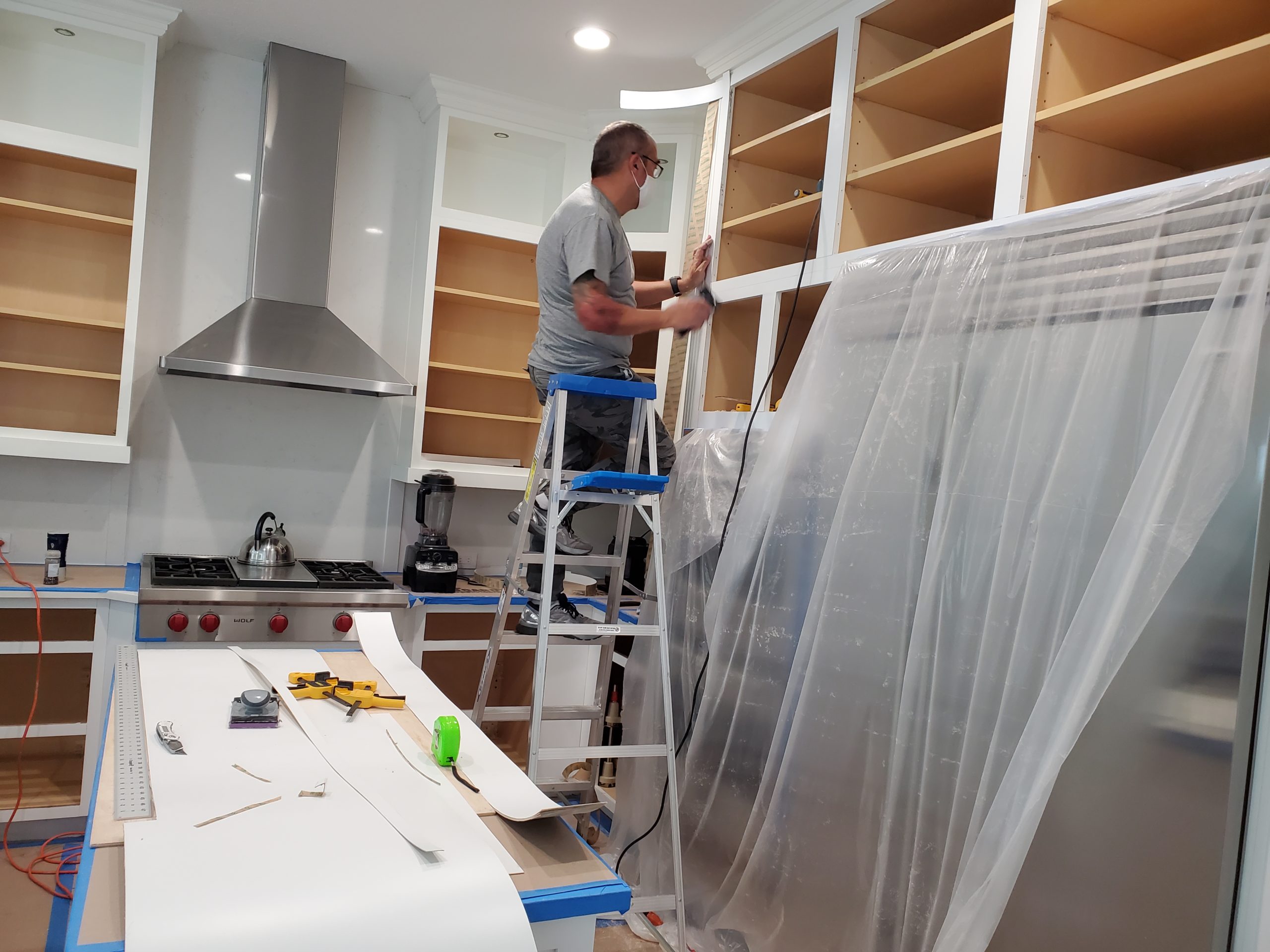
The lengthiest part of your new kitchen is the completion and installation of your countertops. This process takes the longest because a custom template must be created using the exact measurements from your home. Once the countertops are in place, plumbing and appliances can be fully installed. The finalization of this step means your new kitchen is almost ready! Lastly, a backsplash and tile are incorporated into your design scheme giving more character and personalization to your home.
Kitchen Solvers
At Kitchen Solvers, we want to ensure that you, the homeowner, protect and preserve your beautiful kitchen. The most important factor in how to make a kitchen remodel easy is getting help from professionals. At Kitchen Solvers, our expert design team can help you create the ultimate kitchen that fits your budget and offers some of the best features and styles available.
And be sure to read our helpful articles: How to Make a Kitchen Remodel Easy and Confused about Cabinet? A Guide to a Cabinet Reface or Replace!
The post A General Timeline for Your Kitchen Remodeling Project appeared first on Kitchen Solvers.
Did you miss our previous article…
https://www.texaspiekitchen.org/?p=281
Trade Associations Urge U.S. Action on Supply Chain Challenges
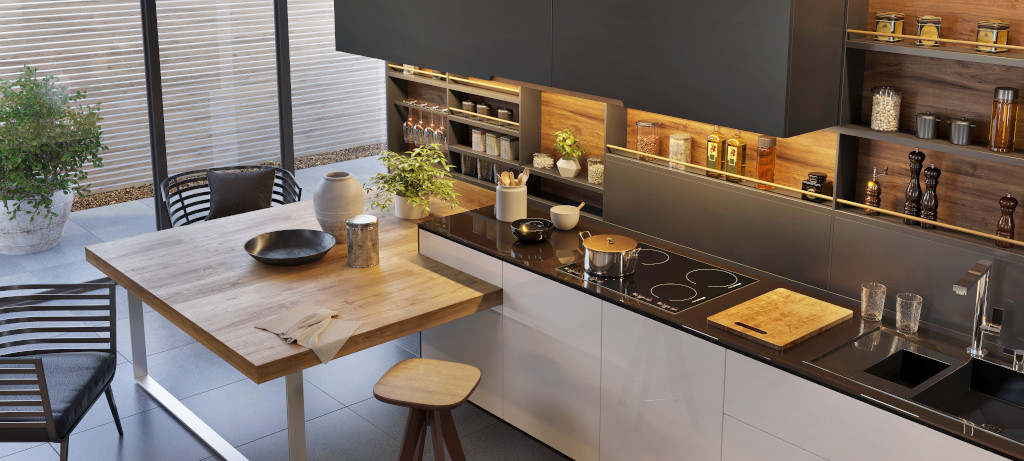
WASHINGTON, DC — The Association of Home Appliance Manufacturers (AHAM), the trade organization representing many of the industry’s leading appliance suppliers, has lent its voice to a four-member coalition of trade associations urging immediate action by the Biden administration and Congress to address ongoing global supply chain challenges.
The Washington, DC-based AHAM yesterday joined the Air-Conditioning, Heating and Refrigeration Institute (AHRI), the North American Association of Food Equipment Manufacturers (NAFEM) and the National Electrical Manufacturers Association (NEMA) in releasing a white paper outlining how supply chain disruptions, which are being compounded by the COVID-19 pandemic, “are hurting the competitiveness of U.S. manufacturers, stalling the U.S. economic recovery (and resulting in) unprecedented damage to the global product supply chain.”
The call for action comes one day after a coalition of workers from across the supply chain warned world leaders that global trade is facing a potential “global transport system collapse” if governments do not restore freedom of movement to transport workers and give them priority to receive COVID vaccines that have been approved by the World Health Organization (WHO).
“The ability to produce and deliver home appliances to consumers has been dramatically hindered by the COVID-19 pandemic and other supply-related issues, creating hardships for consumers and for businesses at every step in the supply chain,” said Joseph McGuire, president and CEO of AHAM. “The result is ongoing shortages of products, materials, components and labor, leading to delays and increased costs,” McGuire said, adding that, in some cases, the supply chain timeline has doubled or tripled.
“This is at a time when consumers are spending more time in their homes and more dependent than ever on home appliances to keep their families healthy and their homes clean,” he said.
The request by AHAM followed a series of meetings between association members and Biden administration staff, centered around issues important to AHAM-member companies, such as the Section 301 China tariffs, Section 232 steel and aluminum tariffs, labor shortages, increased costs for shipping containers and increased shipping times, and semiconductor shortages, AHAM said.
“Combined with increased demand for appliances and equipment, supply chain bottlenecks have negative consequences, including increased costs, lost sales, delayed deliveries of critical products to consumers in the face of supply chain backlogs, and even shutting down manufacturing plants,” the association contended.
AHAM acknowledged that many supply chain issues will require long-term solutions, but the coalition also requested immediate relief from policymakers through tariff removal and fair allocation of semiconductors to all industries.
“Quick implementation of these and other policy solutions may help prevent a continued worsening of the availability of manufactured products in the U.S., while increasing productivity and stemming product cost inflation,” AHAM said.
The post Trade Associations Urge U.S. Action on Supply Chain Challenges appeared first on Kitchen & Bath Design News.